Samsung Galaxy Note 3 Review
by Brian Klug on October 1, 2013 9:00 AM EST- Posted in
- Smartphones
- Samsung
- Mobile
- Android 4.3
- galaxy note 3
S-Pen
I was a tablet user for just over 4 years, but when I mean tablet I mean the old school kind with an active digitizer and Windows, before the age of capacitive multitouch everywhere. With the original Note, I was excited to see active digitizer finally represented again in a mobile device, complete with all the hover and pressure features that come with it. I still find it impossible to use styli on capacitive panels since they lack the resolution and fidelity for the kind of writing I used to do.
With the Note 3, neither quality of the digitizer nor the S-Pen formula change, and that’s a good thing. It’s still the same pen, and from what I can tell, still the same sensitivity and hover distance, and still Wacom based as well. I’m not going to go super in-depth with S-Pen since by this time it should be something readers are familiar with since we’re on the third iteration of Note (and multiple tablets) with the pen.
The Note 3 stows the pen inside itself in basically the same spot as its predecessors, and has the same pen-removal detection and single button on the pen itself. I have no complaints with how it feels or my ability to hold it and write on the screen, and the Note continues to do wrist rejection very well so you can rest your hand on it for making fine grained drawings with a bit of added support.
Perhaps the biggest single improvement with the Note 3 from the perspective of the pen is that it now triggers the menu and back capacitive buttons on the front of the Note 3. I found it confusing on the Note 2 and Note that with the pen out I had to switch between this weird finger and pen modality, rather than be able to accomplish everything with either appendage. With the Note 3, it’s now possible to do just that – it sounds crazy but that single change is the biggest thing that made me instantly happy with the Note 3 the second I pulled the pen out, just being able to hit menu and back with the stylus and have it actually work finally.
With the Note 2 I started to feel like the features that surrounded the pen were getting overwhelming, and I wasn’t sure what feature I should be using at a given time. There’s definitely feature creep each generation as things get added but never really removed, with the Note 3 Samsung does a great job mitigating most of this by surfacing what they believe are the standout features of the S-Pen experience in a popup dialog with a ringed interface and shortcuts to functions. Previously removing the pen would jump you to a special homepage with relevant links if you were on a homepage. Instead if you pull the pen out, this new overlay appears. The overlay makes a lot more sense and has helped me use the pen a lot more than I did previously.
I remember joking with another reviewer that I suspected a large number of Note owners used the pen once, put it back, and never really bothered or understood it after that, and instead were just after the Note for its large display. That sort of mirrored my own use with the Note previously since I’m not artistically inclined or sitting in lectures writing down equations and graphs and diagrams as fast as I possibly can anymore (though soon that hopefully will return with grad school). With the Note 3 and this new interface also shared with the Note 10.1 2014 edition I’m using the pen a lot more since it’s a reminder of what’s really handy.
The ring switcher has shortcuts to action memo, scrap booker, screen write, s finder, and pen window. You can also get to this switcher by hovering and pressing the button on the pen.
Action memo pops up a sticky note that you can immediately start writing on, and it’s the most useful honestly. These notes can then be transcribed on the fly and used to either create contacts or events or look at a location in google maps. The idea is that you’d quickly jot down a phone number and name, or an address, and then be able to act quickly on them or save it for later. I find this works surprisingly well. Samsung says their handwriting transcription engine is also even more accurate this generation, but I don’t have specifics.
Scrap booker lets you grab content displayed on the screen and store it for later, this seems to also parse what’s in a view and intelligently take metadata along with it, for example web pages, YouTube videos, and maps will all get pulled along.
Screen write is a perpetual favorite, it takes a screenshot that you can then annotate or draw on top of. Handy and useful if you need to send something with a pithy remark or drawing to someone either for work or play.
S-Finder is a universal search function that parses through all your notes and memos and writing for a string entered in the search bar. Samsung is always transcribing notes so they’re searchable, this surfaces everything including those hand written notes. I’m reminded of how OneNote search worked, very useful if you’re taking a lot of notes.
Pen window is like a new version of multi window, except instead of snappable windows it’s a viewport of arbitrary size matching roughly what you draw on screen. In practice though the windows are the same aspect ratio as the display (16:9) just whatever rough size you’ve drawn the square and scaled to fit. Samsung continues to try and solve the multi-window problem and admittedly does a novel job here given the constraints of the Android platform. Not every app can be put in one of these smaller windows, rather a subset of the multi window applications.
S Note and the other applications that I remember being present on the Note 2 are still around, as well, it’s just this smaller subset that’s exposed and promoted through the ring switcher. Of course you can also disable the action switcher menu and have pen detachment launch action memo or do nothing at all.
I think S Pen is novel, and what’s important to me works well (the equation parsing engine is supposedly even better and worked with what I fed it), I’m just more sold on the Note as a platform because of screen size than I am note taking. Although the Note 3 doesn’t have the killer third party app attention that draw something had with the original Note, there is Snapchat and a variety of others though that might make the S-Pen a very attractive thing for people looking at the Note for something beyond note taking.


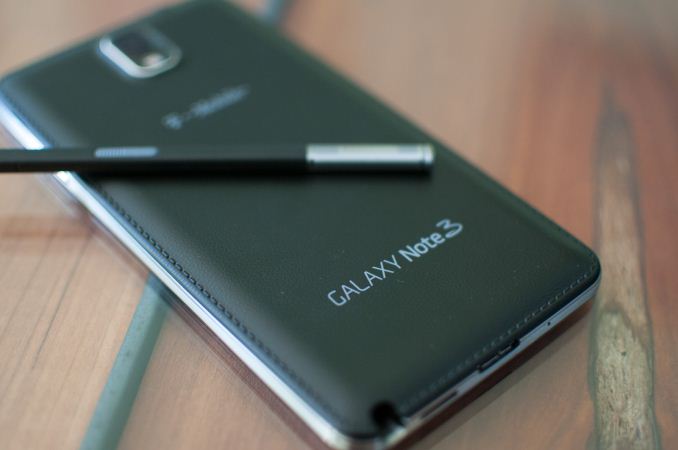

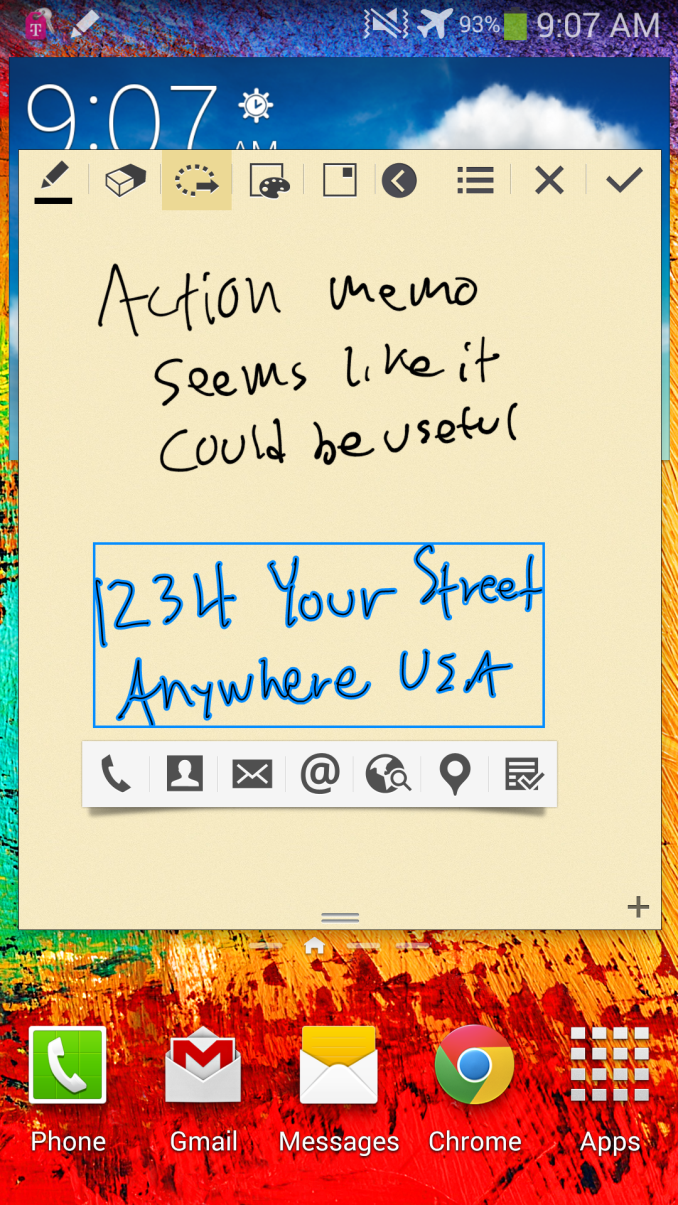

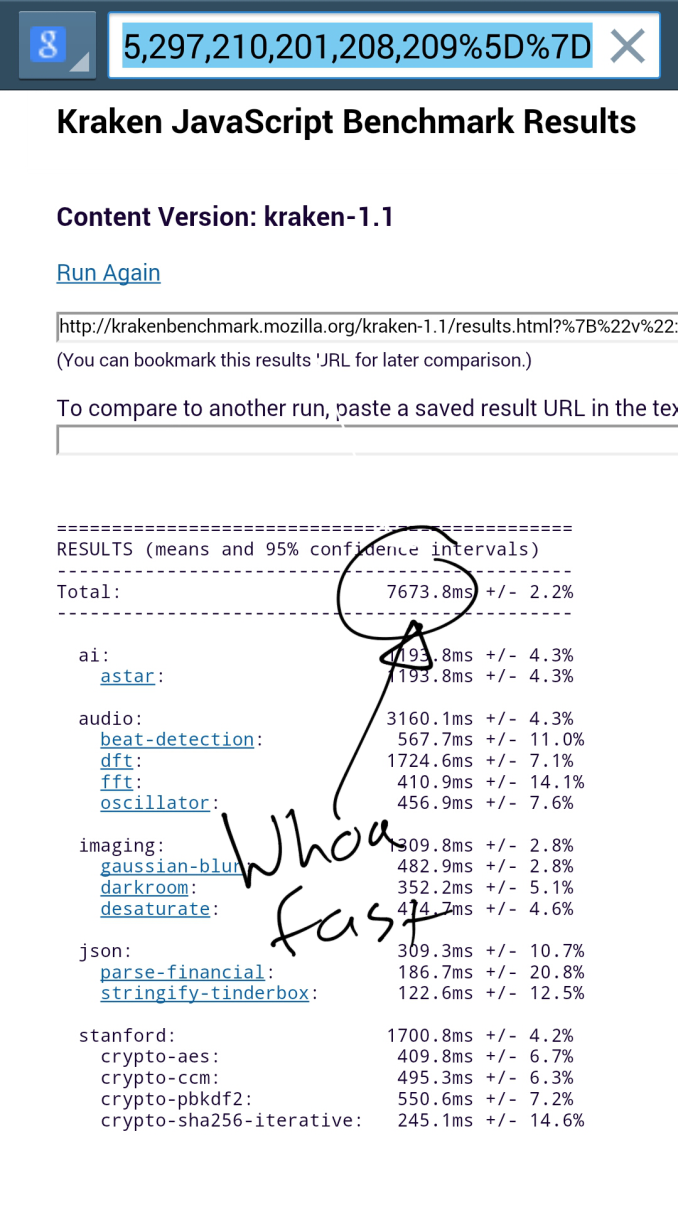
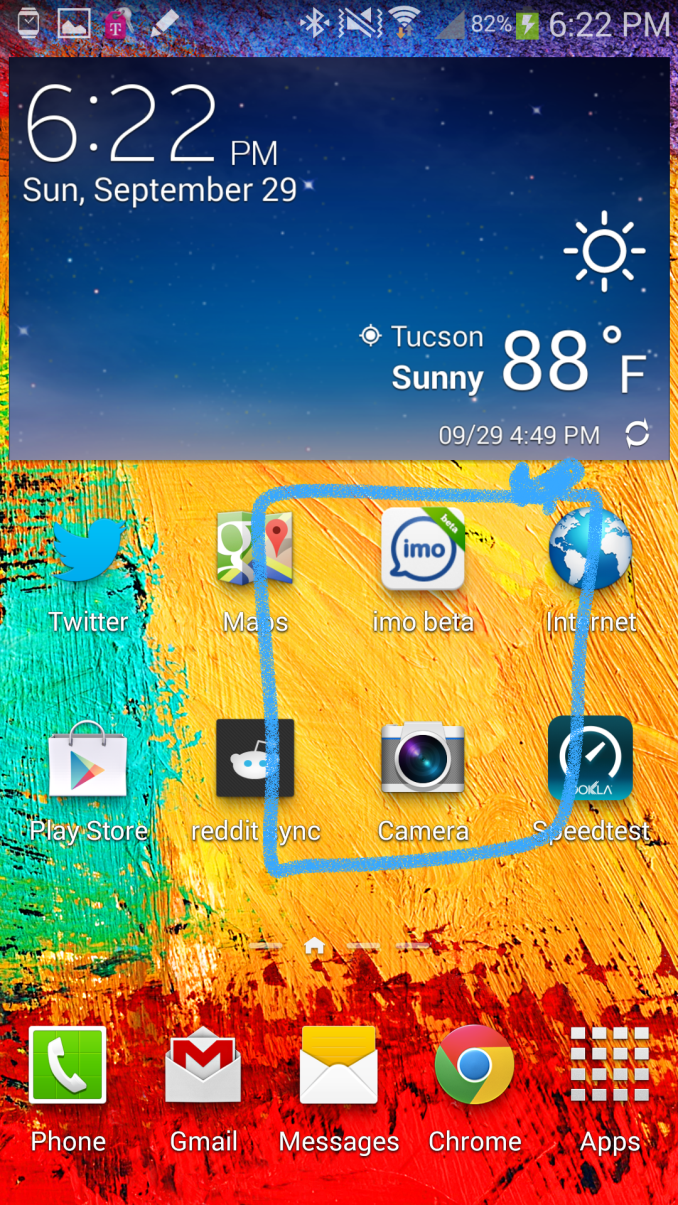
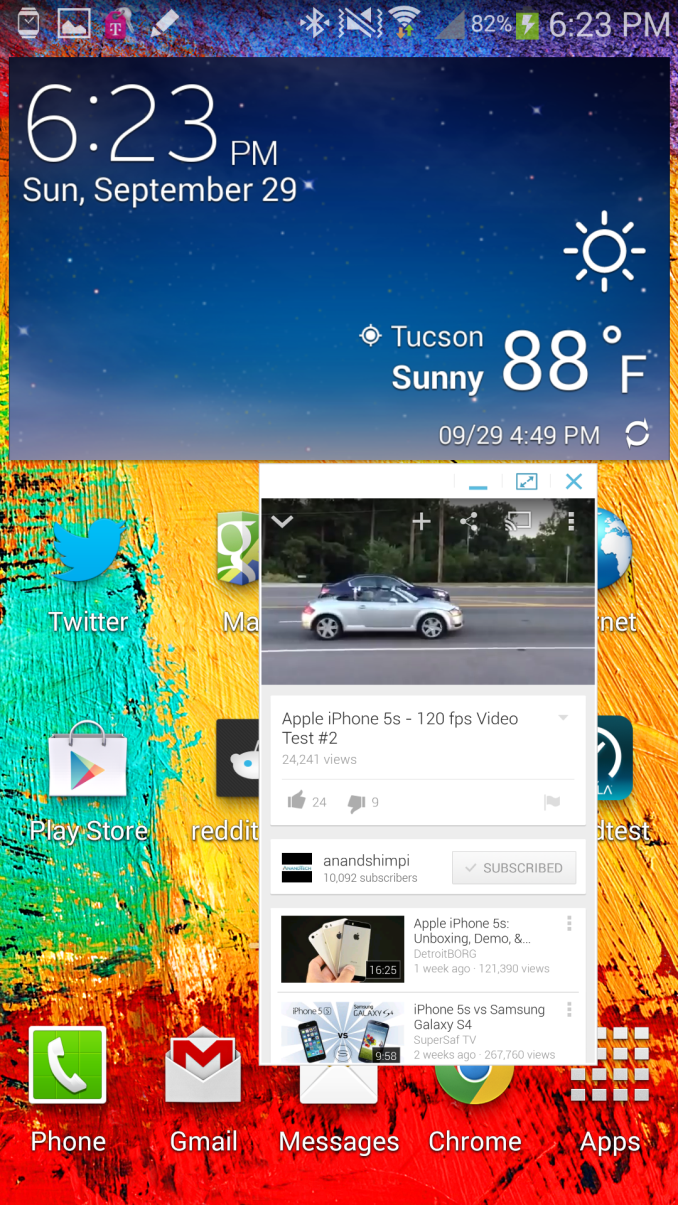
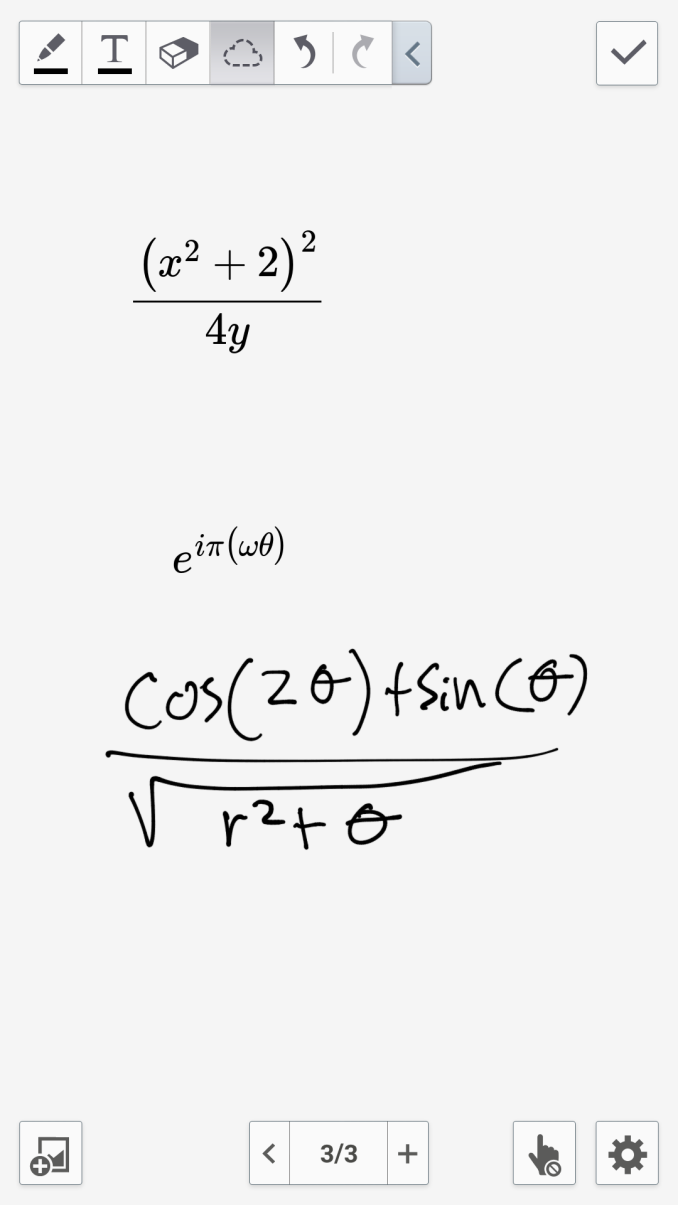
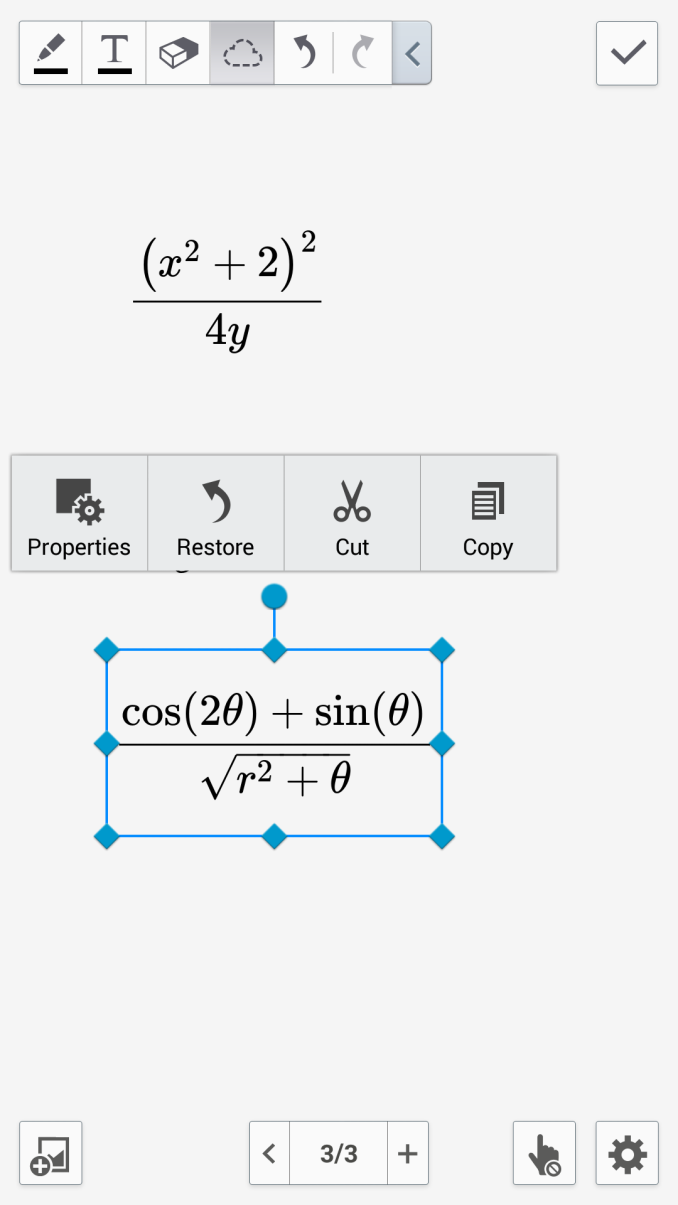








302 Comments
View All Comments
Spunjji - Tuesday, October 8, 2013 - link
Says you.kapg - Wednesday, October 2, 2013 - link
I really respect Anandtech and consider it to be the top benchmark for all tech related stuff.That said I am not sure of a couple of the following things and would really appreciate if someone can please throw some light on these to help me understand these better:
- Browsing benchmarks like Sunspider Javascript Benchmark 1.0, Google Octane Benchmark v1, Mozilla Kraken Benchmark – 1.1 & Browsermark 2.0...are these dependenton/affected by the screen resolution, if so then should they not be run on the same resolution for different devices to provide an ideal representation of the CPU??
- Why is it that all benchmarks that Anantech runs are not run with the same set of devices, some benchmarks are with a certain set and with other benchmarks devices are added. I can understand that not all devices support the same set of benchmark tools but as that is the case should we not test only on those benchmarks that are common to all devices (or on which all devices can be made to run/simulated).....this is just coz it is pretty confusing for a non-expert as me to compare two devices (say Apple iPhone 5s vs Nokia 925 vs Samsung S4)
Am sorry if these querries are noobish as I do not understand the in-depth details of these benchmarks and hope someone can clarify.
peace,
~kg
thunng8 - Wednesday, October 2, 2013 - link
JavaScript and browser benchmarks are not dependent on screen resolutionSamunosuke - Wednesday, October 2, 2013 - link
In the pc world, if it was discovered that Sager's GT780m consistently benched higher than equivalent Alienware/MSI/Asus etc 780m but yet performed the same in games, what would be the reaction? I was surprised when the galaxy s4's benchmark boost was glossed over just because some of samsung's apps were included. That doesn't make it acceptable. The cpu/gpu is a known factor and should be the same for all apps regardless of origin or use. Boosting benchmarks is wrong, plain and simple. All manufacturers who do it should be called out. There are several ways to curb this:1. Do what arstechnica did and circumvent the benchmark boost by renaming the benchmark software (you can keep that and use on all devices from here on out and updating when necessary).
2. Run battery life tests in the boosted state (by renaming the browser/media player/whatever you use to run the battery life tests to a boosted app).
Its not fair if other devices either have lower battery life due to increased performance or higher battery life due to reduced performance and yet others find a way to inflate their scores and get the best of both worlds.
kapg - Wednesday, October 2, 2013 - link
"2. Run battery life tests in the boosted state (by renaming the browser/media player/whatever you use to run the battery life tests to a boosted app)."I do not agree with running battery life test in the boosted state as that is not the regular mode in which any of those apps will function and thus the results obtained will not be realistic. In my view battery tests should be run with the device(s) in standard state and having the same set of apps across all devices and the same activity being performed (in a loop if needed) across all devices.
peace,
~kg
Origin64 - Wednesday, October 2, 2013 - link
Sitting here looking at my SGS (1) all I can think is how little has changed in over 3 years. Screens got a little bigger, resolutions went up, so did the prices, but functionality is just the same as it ever was. Really disappointing, but I guess I can blame the extremely limited data plans for that. Bandwidth-intensive mobile applications cost a lot to use, so we're not even doing half of what our mobile computing could do.Good news is that there's still no incentive to upgrade whatsoever. I can wait a second or 2 for an app to open, and I can spend time opening apps because I dont have to work long hours to spend 600 dollars a year on a phone. See how that all comes back together?
Kathrine647 - Wednesday, October 2, 2013 - link
like Gregory said I am alarmed that a stay at home mom able to earn $5886 in 1 month on the internet. visit their website............Kathrine647 - Wednesday, October 2, 2013 - link
like Gregory said I am alarmed that a stay at home mom able to earn $5886 in 1 month on the internet. visit their website............B u z z 5 5 . comKathrine647 - Wednesday, October 2, 2013 - link
like Gregory said I am alarmed that a stay at home mom able to earn $5886 in 1 month on the internet. visit their website............B u z z 5 5 . com open the link without spaceszoob - Wednesday, October 2, 2013 - link
Am I missing something? I see a paragraph describing the IR port and headphone jack, but I do not see an accompanying photo.